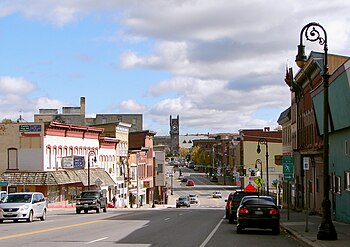|
|
| Dutch Schultz Armored Car (Photo credit: www78) |
When he was acquitted on August 1, 1935, the crowd outside the courtroom cheered. Judge Bryant “who was visibly astonished, disappointed and thoroughly exasperated. In fact, he practically ‘lost his cool.’ ‘Your verdict,’ he declared, ‘Is such that it shakes the confidence of law-abiding citizens in integrity and truth. It will be apparent to all who followed the evidence in this case that you have reached a verdict not on the evidence but on some other reason. You will go home with the satisfaction, if it is indeed a satisfaction, that you have rendered a blow against law enforcement and given aid and encouragement to people who would flout the law. In all probability they will commend you. I cannot!’” (Franklin County Review, vol 12, pg. 27).
Schultz tried to shake hands with the jurors. The first he tried said, “Mr. Schultz, I wouldn’t shake hands with you under any circumstances—especially here!” (Franklin County Review, Vol 12, pg. 27).
But the jury felt the government hadn't proved its case despite having called sixty-nine witnesses to the defense's seventeen.
Perhaps the biggest blow to the prosecution was that “Judge Bryant, at the request of the defense staff, ruled that the famous black ledger containing all the incriminating details of the Schultz organization’s operations had been illegally seized and directed that it be returned. The ledger being the core of their case the Government lawyers were stymied and practically futile without it” ( Franklin Historical review, vol. 12, 1975, p.26 ). This ledger had been meticulously kept, down to the penny, and in impeccable penmanship.
Then during the trial, defense attorney George Moore proclaimed, “the beer business was a hazardous business—our local bootlegger never made much money.” (Kill the Dutchman by Paul Sann pg. 253).
The above obviously played into the acquittal. Foreman Chapin said, “I am sure that no man on the jury approves of racketeering or anyone connected with it. In fact the jury considers Schultz to be a public enemy. But the fact that he was a racketeer and in the beer business could have no bearing on the case. We felt that the Government did not prove its case. The whole discussion centered around whether or not he was guilty of willfully evading tax payments We were instructed to follow the evidence that that’s what he did. Pre-trial influence had no bearing whatsoever on the verdict, which was 9 to 3 for acquittal.”
And according to Schultz, “An easy acquittal" (ibid).
Dutch Schultz showed the same generosity to Malone
after his exoneration as before his trial.
At Moore’s office, two secretaries accepted five pound boxes
of chocolates (pg 27 Review).
And according to Fredrick Seaver who wrote the quintessential historical guide to Malone, more than one farmer had new cows after the trial.
Schultz tried to shake hands with the jurors. The first he tried said, “Mr. Schultz, I wouldn’t shake hands with you under any circumstances—especially here!” ( Review, Vol 12, pg. 27).
Beyond these things, Schultz did not stay in Malone long.Knowing that Dewey still had it in for him, he set up his enterprise in Newark, New Jersey.
Shortly before his death, fearing that he would be incarcerated as a result of Dewey's efforts, Schultz commissioned the construction of a special airtight and waterproof safe, into which he placed $7 million in cash and bonds. Schultz and Rosencrantz then drove the safe to an undisclosed location somewhere in upstate New York and buried it. At the time of his death, the safe was still interred; as no evidence existed to indicate that either Schultz or Rosencrantz had ever revealed the location of the safe to anyone, the exact place where the safe was buried died with them.
Gangland lore held that Schultz's enemies, including
Lucky Luciano, spent the remainder of their lives searching for the safe. The safe has never been recovered.
Treasure hunters meet annually in the Catskills to search for the safe. One such congregation was documented in the documentary film Digging for Dutch: The Search for the Lost Treasure of Dutch Schultz” (Wikipedia).

Schultz was gunned down October 23, 1935 at the Palace Chop House in Newark, New Jersey.
He survived the initial shotgun blasts and was whisked into surgery. “Before Schultz went to surgery, he received the last
rites from a Catholic priest at his request. During his second trial, Schultz
decided to convert to Catholicism and had been studying its teachings ever
since, convinced that Jesus had spared him prison time. Doctors performed
surgery but were unaware of the extent of damage done to his abdominal organs
by the ricocheting bullet. They were also unaware that Workman had
intentionally used rust-coated bullets in an attempt to give Schultz a fatal
bloodstream infection (septicemia) should he survive the gunshot. Schultz
lingered for 22 hours, speaking in various states of lucidity with his wife, mother,
a priest, police, and hospital staff, before dying of peritonitis” (Wikipedia)
So instead of living safely in jail and running his empire, the events in Malone, New York actually contributed to his death.











